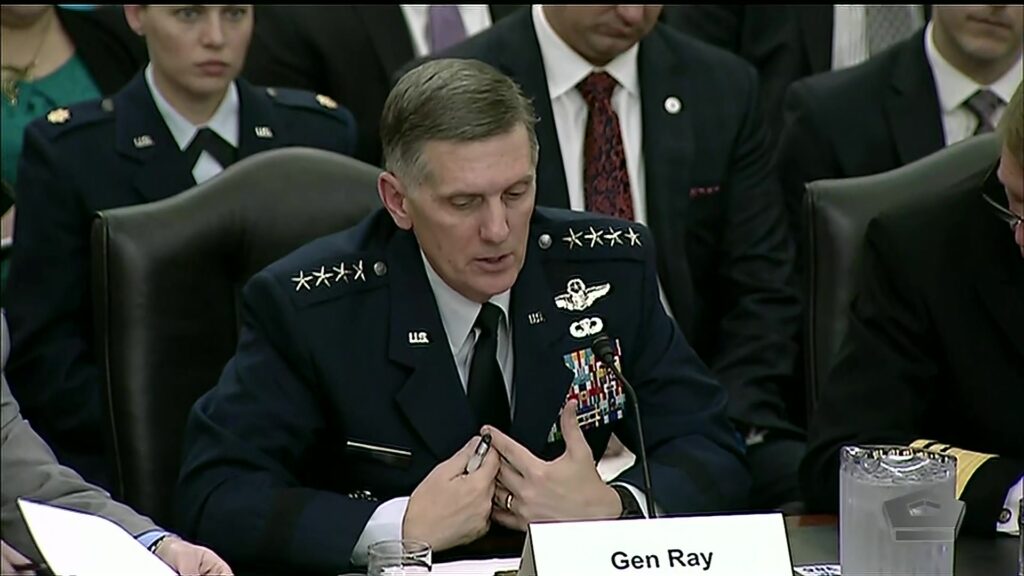 SANTA MONICA: Gen. Timothy Ray, Air Force Global Strike commander, says he has asked service Acquisition czar Will Roper to begin exploring development of a “bomb truck.”
SANTA MONICA: Gen. Timothy Ray, Air Force Global Strike commander, says he has asked service Acquisition czar Will Roper to begin exploring development of a “bomb truck.”
“I think it would be a healthy excursion to go see if we can build a low cost, very simple bomb truck to increase our standoff weapons capacity,” Ray said. The idea would be “leveraging existing technologies, instead of it being a full blown, highly integrated, stealthy platform.” Such a long-range standoff plane would be designed not just to be cheap, but also to have a short life cycle of around 10 years, Ray told the RAND West Coast Aerospace Forum here on Friday.
Ray said the idea is to bounce possible approaches off of what Roper is trying to do with the concept of a Digital Century Series: to rapidly churn out iterative versions of fighter jets every four or five years to be able to integrate new technologies are they become available.
“The question is what could be done if I wasn’t asking for something that I would fly for more than 10 years,” Ray said, “and to be a little bit more creative.”
“There is no significant game plan here,” Ray said. “I just think, why not? You can’t win if you don’t play.”
With regard to the future bomber force, Ray reiterated that “all the studies have told us that the number of bombers we require is somewhere north of 225.” But, he also stressed that it is not just the numbers that matter, but also the capabilities they bring and the connectivity they have. He added that the B-21 is his second highest priority in modernizing the nuclear arsenal, even though it will largely be carrying conventional weapons.

B-21 bomber
Ray also stressed the need for an overhaul of nuclear command and control (NC2) to make it more survivable and resilient — both as part of the overarching nuclear modernization plan and as an integrated part of multi-domain operations (MDO) and Joint All-Domain Command and Control (JADC2).
“We’re chartered at Global Strike … to write what’s called a concept of force development for ‘NC2 over assured comms’,” Ray said. The concept development was approved by Gen. John Hyten before he left as head of Strategic Command to take up his new position as vice chair of the Joint Chiefs of Staff, Ray noted.
“What you heard up here today on all domain C2, I’ll tell you, I absolutely see nuclear command and control in that conversation,” Ray said, “not as a separate kind of thing — because of how fast technology is going and what it can do.”
Ray explained that the concept will develop “five or six vignettes, which should beget crisper conversations with industry; should beget prototyping and experimentation” in order to create the “the foundation for a more affordable version of an assured comms capability.”
He explained that the rest of the military is pursuing new technologies and ideas to assure communications at all levels, and the nuclear forces should not be left behind.
“We absolutely need to make sure we get our surfboard out as NC2 guy and catch that wave,” he said.






















